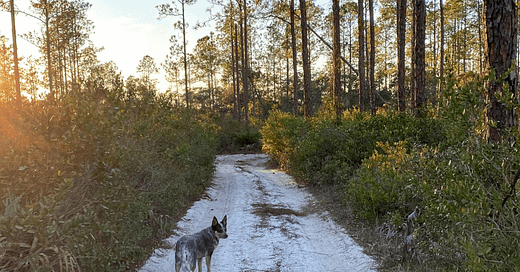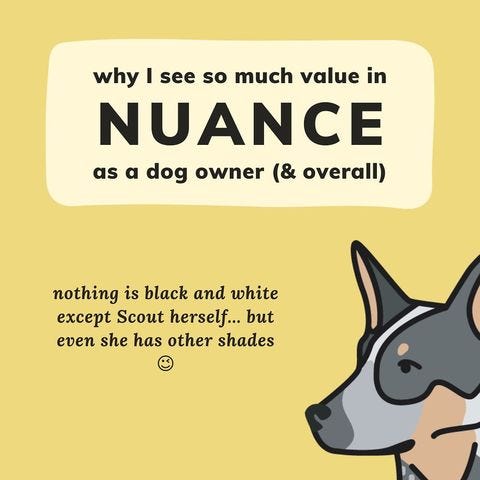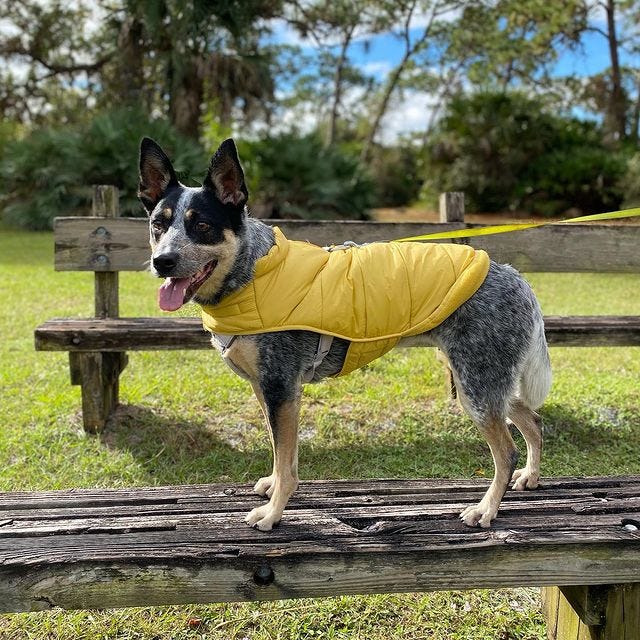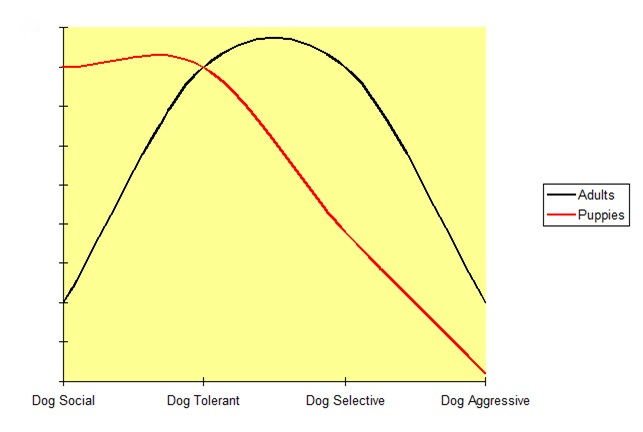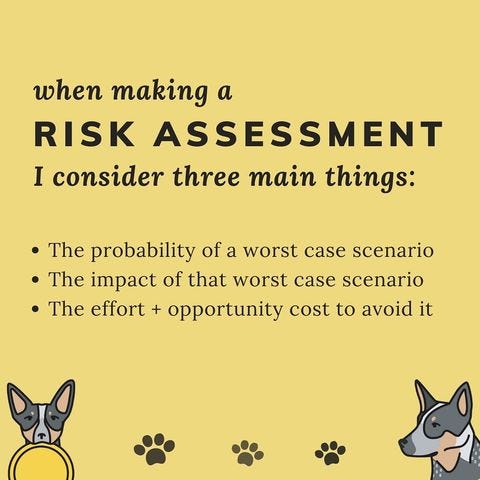Are public dog parks great? Are public dog parks awful?
When my parents first adopted our family’s special-needs Siberian husky in 2017, I couldn’t wait to take her to the dog park. My childhood dogs had never visited the environment (in truth, we just really didn’t socialize them at all) and I thought it would be a great way to connect with fellow dog people in the community. And get to pet all the pups, of course. Dream come true!
Then I got more involved in the dog training space. After a few years following as many professionals as I could find on social media, reading every article I came across, talking to anyone who would listen, and eventually adopting my cattle dog (and being thrust into the world of behavior modification) I swung hard to the other extreme.
I hated public dog parks. I judged owners who put their pets in what I saw as an incredibly risky situation. No one could convince me they were worth the possible fallout of a negative experience.
But like most things in the dog ownership space… and in life overall… I found my perspective broadening over time.
Today I’ve come to what I see as a spot in the middle ground. I lean towards being “anti dog park” if I absolutely have to pick a side. But the conversation is more nuanced, in both directions, than I used to think. Here’s a deep dive into my current views on going to the dog park!
TLDR summary
Traditional public dog parks come with risks like physical injury, illness, contribution to both frustration- and fear-based dog reactivity, loss of faith in handler, and more. Most professional trainers don’t recommend their use.
But that doesn’t mean all designated dog parks are terrible.
Some truly social and very tolerant dogs might enjoy socializing with new friends more than most. (A minority, sure, but one it’s worth recognizing before we judge owners who understand what they’re doing.)
Not all dog parks are created equal. Tiny tenths of an acre with a culture of chaos? Yeah, that sounds like a nightmare. But miles of off-leash legal forests with hiking trails and space to de-escalate conflict? That’s a different story.
We don’t go to dog parks because 1) Scout doesn’t enjoy being around other dogs and 2) I’m a very risk averse person, especially after what we’ve been through training wise with her fear.
But just because that’s our decision doesn’t mean everyone else has to make the same one — or that there will never be a future situation where I change my mind depending on the variables at hand.
At the end of the day, every dog owner gets to assess risk for themselves. I’d love to see more education about the possible fallout of dog parks — and greater understanding of domestic dogs’ unique needs as social mammals who have coevolved with us — so that people can make thoughtful, informed choices.
General risks of dog parks
1) Small, fenced-in dog parks create an unnatural social environment
The same way we humans don’t excitedly hug every stranger we meet, it’s not reasonable to expect our dogs to want to play with every member of their own species.
Yes, dogs are social creatures
Make no mistake: Dogs are social mammals. A dog who doesn’t get enough meaningful social interaction is absolutely going to be unhappy — and that interaction can definitely come from other dogs.
But dogs aren’t indiscriminately social with every stranger they meet
But being a social animal does not mean being indiscriminately social. While dogs can form deep bonds with close friends and family members much like we humans do, they aren’t automatically best friends with other pets they’ve never met. In fact, it’s perfectly natural for many domestic dogs to be territorial and wary of strangers!
We can think of dog sociability as a spectrum. The below graphic from Paws Abilities captures the range nicely. Most dogs benefit from slow introductions where they can get to know a potential playmate slowly… rather than being bombarded with strangers in a small space. (That’s exactly how I like to meet new people, too.)
And many dogs prefer close human bonds over large groups of dog friends anyway
What’s more: Social fulfillment doesn’t have to come from our own species. Domestic dogs and humans coevolved together over generations and generations. Some dogs seek out human contact over that with other canines. Depending on breed, direct ancestors, past experiences, and everything else that goes into making an individual who they are, two things can be true at once:
Some dogs do crave social interaction with fellow dogs. They will not be adequately fulfilled without it, and they might develop frustration-related problem behaviors as a result.
Other dogs are more human focused (or introverted in general) and can happily live interacting only with their immediate family members. (Think of livestock guardian dogs who spend years primarily with their flock, not with other canines.)
We should avoid teaching super social dogs they can greet every new dog they see
Finally, even the truly dog social percentage can develop bad habits if they frequently visit the dog park without also being taught impulse control and given clarity about when greetings will and won’t happen.
Frustration-based dog reactivity is common in pets who are unstructured daycare or dog park regulars. When an otherwise-friendly dog turns into a monster at the sight of other dogs on leash, it’s often because he or she really wants to “say hi” or investigate. Being contained creates frustration — especially if s/he’s used to always getting to interact — which results in an explosion of barking, growling, lunging, and more.
Potential ways to mitigate the risk of tight spaces
Work on building frustration tolerance
Understand our dogs’ signals and advocate for their space when needed
2) Contagious illnesses and parasites can spread in heavily trafficked areas
Diseases and parasites spread well in heavily trafficked areas, especially in warm climates and when wet ground is involved. While this is a risk any time we take our dogs out into public — much like how we ask our own immune systems to fight a slew of unseen bugs whenever we leave the house! — it’s particularly high in crowded spots and those that aren’t regularly cleaned. Unfortunately, many traditional dog parks fit that bill perfectly.
Possible ways to mitigate chance of illness
Opt for dog parks that require proof of vaccination
Visit less popular locations or at less busy times
Always clean up your dog’s poop right after they go
Don’t let your dog drink from shared water bowls
Don’t let your dog eat anything from the ground in a dog park
3) Physical injuries in dog parks range from mild to severe
Traditional dog parks are hubs for both accidental and intentional harm.
Mismatched play styles and body sizes can result in injuries like small puncture wounds, scratches, strained or torn muscles, and so on. Even if social dogs don’t mean for anything to happen, these incidents can still result in a physical and sometimes mental impact (more on that later).
Then there are the intentional injuries when dogs are pushed to fight. Dog park squabbles can be triggered by many different things — especially an inability to read each others’ social cues, large groups of dogs blocking entrances, and not having enough room for pets to choose “flight” instead.
Even a “friendly” dog can start a fight if he struggles to read his playmate’s social cues
One of my favorite quotes by dog trainer Chad Mackin is: “Understand, a poorly socialized but friendly dog can easily start a fight he’s not looking or prepared for. If I ran up to every stranger I met and tried to hug them, eventually someone would punch me in the face.“
And many well-meaning dog owners aren’t up to speed on canine body language and mistake signs of stress for signs of enjoyment… further adding to the risks of having multiple unfamiliar people and pets in an enclosed space.
Potential ways to reduce the chance of dog park injuries
Carefully choose the dog parks we visit (more in the “not all dog parks are created equal” section later)
Know how to break up a dog fight
Pay attention to the body language of dogs present
4) One negative experience can have a lasting impact on our pets
This is the risk that hits me hardest. Scout was timid around other dogs when I adopted her. Then she was attacked and pinned to the sidewalk by an out-of-control dog on a walk… and that timidity turned into full-blown terror, complete with intense barking and growling and lunging displays.
It was not fun for anyone involved. We spent years of our lives focusing day in and day out on how we could address her fear reactivity. While we’ve come a long way — and I’m so thankful for everything we’ve learned! — it’s not a journey I’d wish on anyone.
Every dog is different, of course. Some are better able to shake off traumatic incidents than others (and goodness knows Scout had some genetics & previous past experiences stacked against her too). But one-trial learning can happen — a single experience has the potential to alter our lives forever — so we should think critically when interacting with unknown people and dogs.
Possible ways to mitigate the risk of of one-trial learning
Provide our dogs with a range of healthy social interactions to build a strong foundation
Work on resilience and recovery from stressful events
Potential benefits of dog parks
1) Public dog parks can be a place to train our dogs around distractions
Some trainers work their dogs inside the dog park as a sort of “ultimate distraction” test. If your pet can stay engaged with you while other animals run and chase and bump into each other and make a bunch of noise, that’s a huge testament to impulse control, confidence, and relationship with you.
Note that the dog park is not an ideal environment to start training. If your living room is a kindergarten classroom for working on obedience, a traditional public dog park is like a PhD lecture hall.
Potential alternatives to training inside public dog parks
Training right outside of the dog park 😉
Off-leash legal areas that are more spacious, not enclosed, or where the focus isn’t on dogs playing with each other (think hiking trail versus traditional dog park)
Visiting a range of other public spots like parking lots, veterinary offices, pet-friendly malls, and so on
2) Dog parks can provide social fulfillment for social dogs
As mentioned in the previous section, dogs are social mammals — and some dogs don’t feel fulfilled unless they’re able to interact with their own species regularly. At their best, dog parks are places where very tolerant pets can fill their social cups in a setting that’s free (or low cost) and easily accessible for their guardians.
Possible alternatives to playing in public dog parks
Setting up small playdates with trusted dog friends
Structured daycare monitored by professionals you trust
Meeting up with fellow owners you connect with online or in other communities
Organizing or joining a local group dog walk
3) Dog parks can provide an important social outlet for the human end of the leash!
It would be remiss to spend all this time talking about social mammals without acknowledging that public dog parks often provide fulfillment for owners. Some people most look forward to their daily dog park visits to connect with fellow human beings. Uniting in a shared love for canines can act as a social lubricant to make it easier to talk to strangers without feeling anxious!
While not every dog enjoys it — we should not put them in uncomfortable positions just for our own sake — it’s true that pets can be great buffers and sources of conversation.
Potential alternatives to making human friends at public dog parks
Connecting with a training community online
Finding an in-person training community (group classes, local Facebook groups, etc)
Joining neutral pack walks (many of these are free or low cost)
4) Designated off-leash areas can be important for owners who aren’t able to exercise their dogs in other ways
One of my biggest issues with people taking a staunch across-the-board “dog parks are awful” stance: It often fails to recognize privilege. Physical (like being able bodied and thus capable of walking or running with your dog), class (like having access to other resources such as training classes or private dog park options), location (living in an environment with safe areas to bring your dog), and more.
Not everyone is able to routinely hike or play intense games with their dog — but that doesn’t mean they don’t deserve to still enjoy life with a canine companion. Public dog parks can be an important service for owners to legally let their dogs move freely off leash when they don’t have other options.
Possible alternatives to public dog parks for exercise
Play! Particularly tug, flirt pole games, and similar activities that can work in small spaces
Weight pull or drag work (which doesn’t require much handler physical ability)
“Dog park” is a very broad term
Many conversations about dog park risks and benefits center around traditional, small, enclosed spaces — but not all off-leash legal areas are created equal. “Dog parks are bad” is a sweeping generalization… which means it’s not always true.
So much depends on the individual dog park setup
I think the best dog parks are spacious with varying terrain
Some dog parks are large, expansive areas complete with hiking trails, foliage, and other barriers that make it easier for dogs to interact in a natural way (read: not feel pressured to immediately face off with dozens of unfamiliar pets upon entering).
The worst dog parks confine pets into forced interactions
Huge open spaces are a lot different than tiny fenced-in areas where dogs are all but forced to be on top of each other the entire time. The traditional enclosed dog park set in the middle of a city block comes with a lot more risk than a several-acre environment with more room to maneuver.
So much depends on the individual dogs present
As mentioned above, dog sociability is a spectrum. Truly dog-social dogs might be good candidates for even some of the smaller dog park environments. Dog-selective dogs, on the other hand, are unlikely to enjoy themselves in all but the largest public dog park spaces.
Level of training, owner trust (or lack of), frustration tolerance / impulse control, and other additional factors play a role too. A dog park environment made up of social or tolerant pets with basic recall training? That is a lot safer than the same space filled with unruly, boisterous pets!
So much depends on owner culture & expectations
The unspoken culture of a dog park can also tip the scale towards safety or risk. Some dog parks attract a group of like-minded regulars who closely monitor their pets’ play and form deeper relationships. Others seem to be full of out-of-control dogs and owners who use the space more like a free pass to ignore their dog than a fulfilling experience for everyone involved.
What I’d recommend to a new dog owner when it comes to dog parks
When a friend comes to me and asks what I think about them taking their new dog to the dog park, I usually advise against it.
My personal experiences with Scout have colored my perceptions here quite a bit. I’ve seen what just a small handful of bad experiences can do (especially when a dog is already nervous as a baseline) — and I’ve experienced the intense logistical & emotional struggles of day-to-day life with a fear-reactive dog. That’s enough to encourage my loved ones to err on the side of caution!
Once an owner gets to know their new addition a bit better, starts building a trusting relationship, and feels like they understand the potential risks of a dog park visit (and how to respond if something goes wrong) I’ll never tell them not to try it out. I just don’t think it should be one of the first things they do together.
My personal advice to a new owner thinking about visiting a dog park:
Avoid all designated dog parks or off-leash areas when you and your new dog are still getting to know each other
Build some basic obedience skills and mutual trust before venturing to more distracting environments
Seek out dog parks that are large, preferably with some sort of trail system or lots of space to roam
Always take a few minutes to gauge the other dogs and owners inside before entering a dog park
Ultimately: Every owner gets to make their own risk assessments
If someone takes their social dog to the dog park regularly, is aware of possible risks, and they both enjoy the experience? Awesome. If someone has sworn off all dog parks and feels satisfied fulfilling their pet in other ways? Awesome. At the end of the day, every dog owner gets to make their own risk assessments!
I would personally love to see more education about the risks of dog parks — and greater understanding of domestic dogs’ unique needs as social mammals who have coevolved with us — so that people can make thoughtful choices. What’s best for me might not be best for you and vice versa.
What’s important is that we feel informed and get the chance to think things through.


